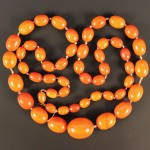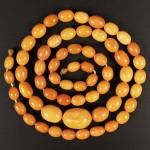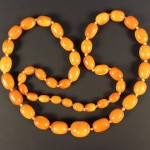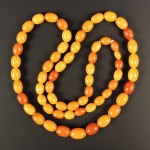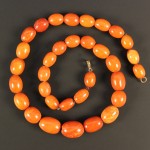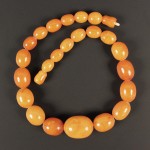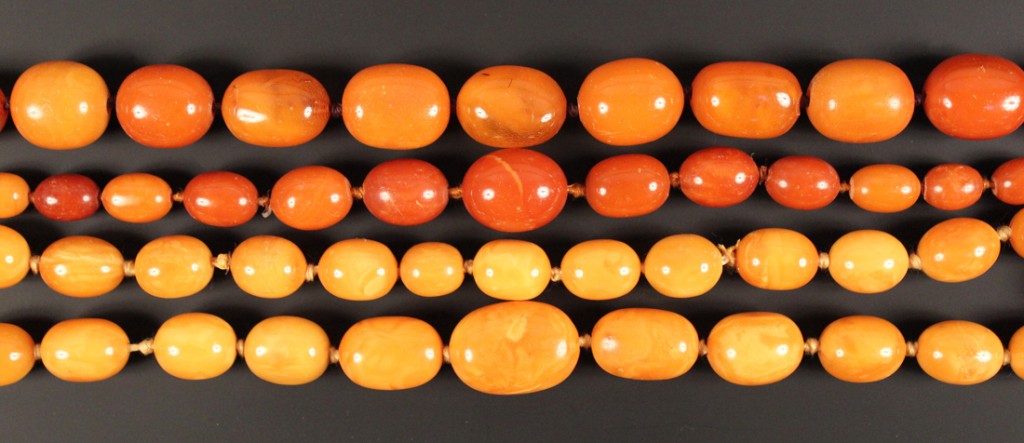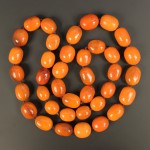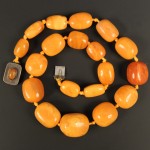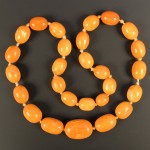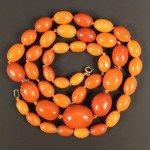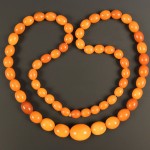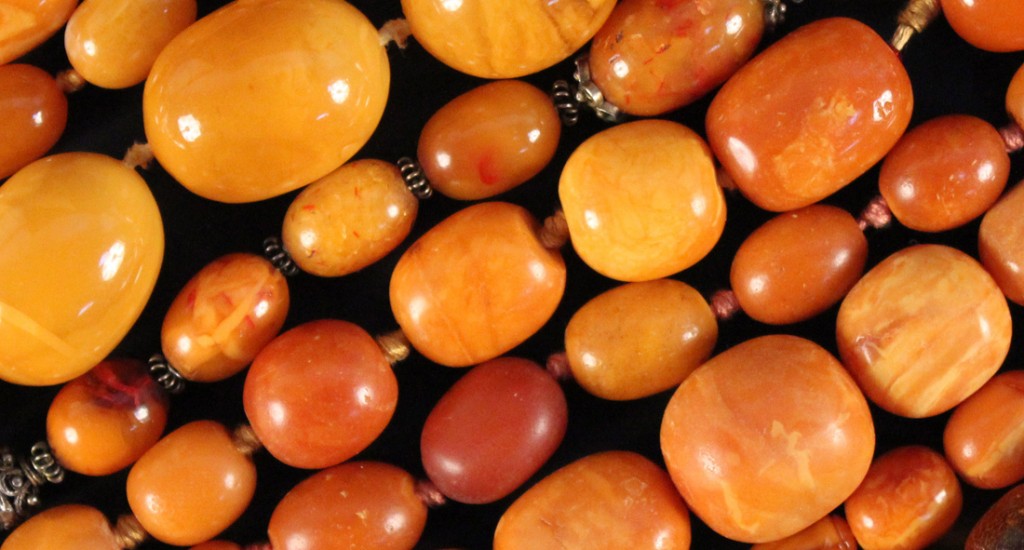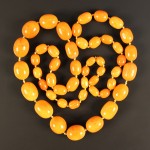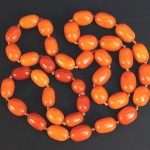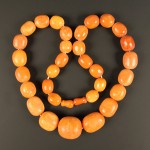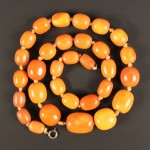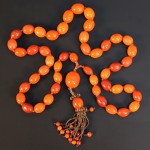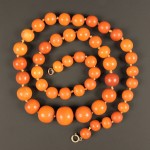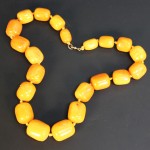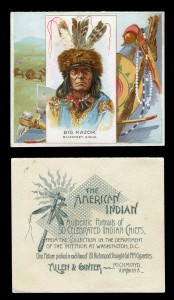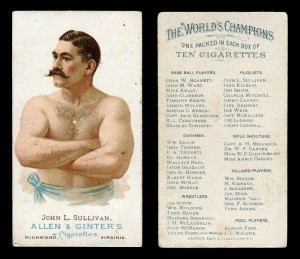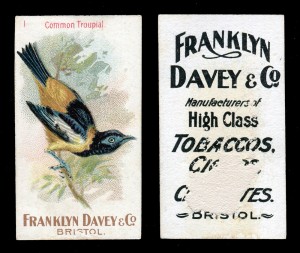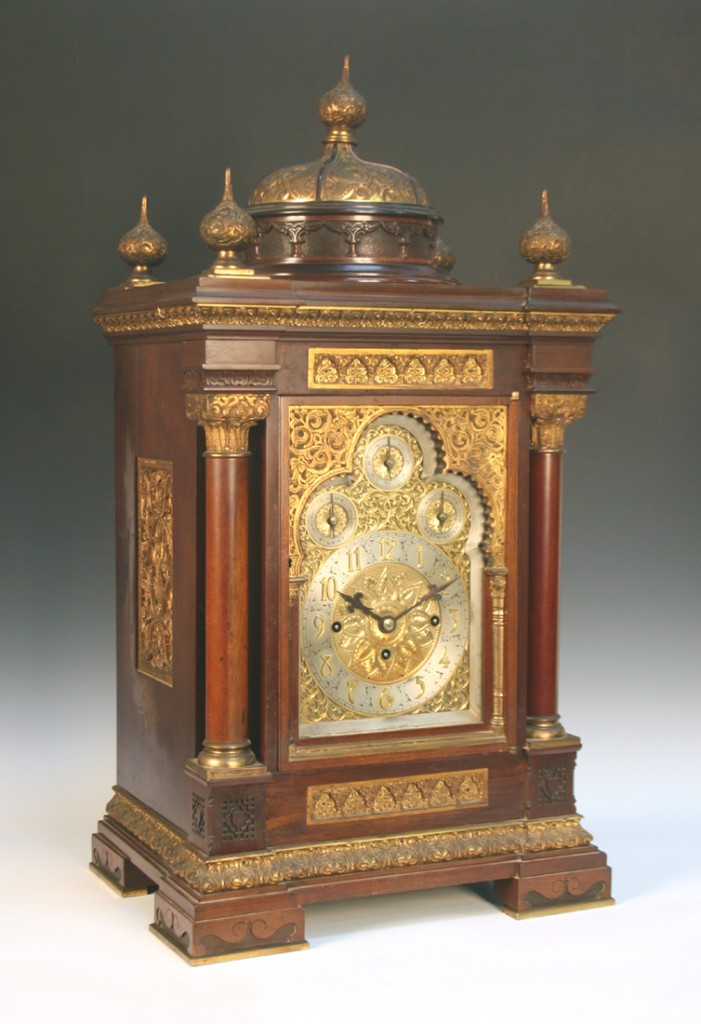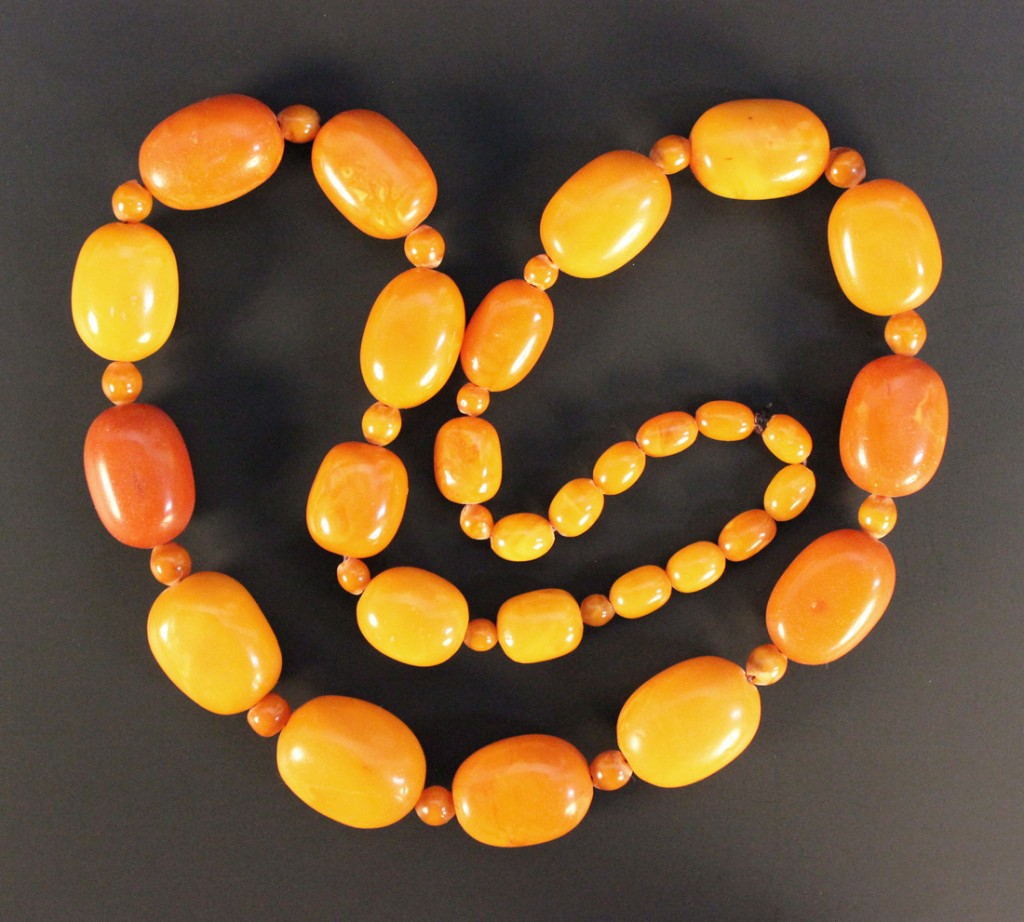
As documented in our previous blog posts on amber, the market for amber is undeniably incredibly buoyant.
Among the offering of amber beads in Toovey’s February auction was a single row necklace of nineteen large and thirty small vari-coloured oval and spherical butterscotch coloured opaque amber beads (gross weight approx 175.5g, total length approx 88cm). This necklace (illustrated right) sold under the gavel for £7,000. The prices for this fossil tree resin which starts out in a liquid form are about twice the current price for gold per gram for the right example.
The February auction included a number of other examples, a selection of which can be seen below.
Toovey’s jewellery auction on the 26th March 2014 includes another good selection of amber.
